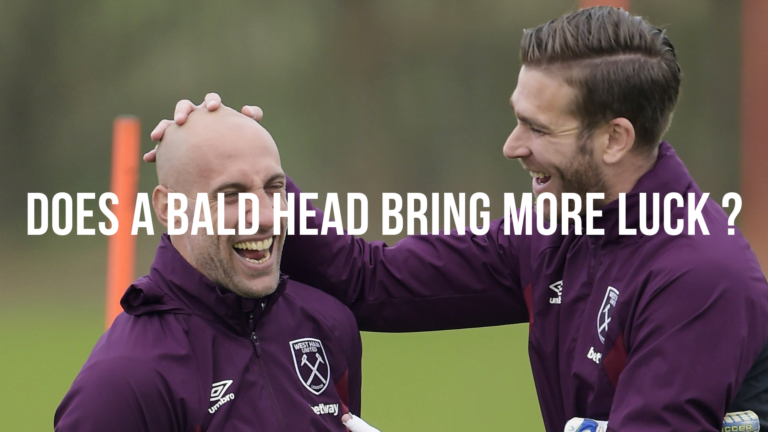Doctors tend to have higher rates of male pattern baldness compared to the general population. Several factors contribute to hair loss and thinning hair being so common among physicians. Let’s explore why doctors are more prone to going bald.
Definition of Male Pattern Baldness
Male pattern baldness, also known as androgenetic alopecia, is the most common type of hair loss in men. It’s characterized by a receding hairline and thinning hair on the crown of the head over time. The hair follicles affected by male pattern baldness shrink and produce thinner and shorter hairs with each growth cycle until the follicles stop growing hair completely.
Causes and Genetics of Male Pattern Baldness
Male pattern baldness is primarily caused by genetics, age, and hormones. It’s passed down through families, usually from the mother’s side. A sensitivity to dihydrotestosterone (DHT), a derivative of the male hormone testosterone, causes the follicles to weaken and shrink on affected areas like the temples and crown. This sensitivity is inherited genetically. Male pattern baldness tends to begin in the late twenties or thirties and gets more prominent with age.
Stress and Balding in the Medical Profession
Doctors operate in high-stress environments on a daily basis, which can accelerate hair loss.
Long Hours and Irregular Schedules
Long and irregular working hours are common for many doctors. Constantly working overtime leads to fatigue and emotional exhaustion. This long-term stress and lack of work-life balance taxes the body, including hair follicles.
High-Pressure Situations
Doctors face tremendous pressure handling life or death situations. Emergencies, difficult diagnoses, and losing patients are emotionally and physically draining. This constant high-stress environment likely impacts hair loss.
Constant Exposure to Illness and Trauma
Working in healthcare also involves consistent exposure to trauma, pain, illnesses and injuries. Seeing this level of human suffering all the time can compound stress. Ongoing stress affects hormones tied to hair growth.
Poor Nutrition and Self-Care Among Doctors
Neglecting nutrition and personal health is widespread among busy doctors and can worsen balding.
Lack of Proper Meals and Snacking Habits
Irregular schedules make having balanced, nutritious meals difficult. Doctors often resort to grabbing fast food, energy bars or skipping meals. This long-term malnutrition taxes the body. Key nutrients that support hair health get overlooked.
Insufficient Exercise and Rest
Exhaustion and lack of exercise is common among doctors due to long shifts and erratic schedules. Not getting enough sleep or physical activity leads to increased cortisol. Elevated cortisol levels are linked to accelerated hair loss.
Neglecting Hair and Scalp Health
Busy doctors are unlikely to take time for adequate hair and scalp care. Lack of scalp massages, moisturizing, leave-in treatments and hair protective styles can worsen hair thinning.
Treatment Options for Balding Doctors
Doctors experiencing male pattern baldness do have medical and cosmetic options to treat hair loss or conceal thinning hair.
Medications Like Finasteride and Minoxidil
Oral and topical medications can slow hair loss. Finasteride blocks DHT and minoxidil prolongs the growth phase. Consistent use is needed for benefits. Side effects are possible.
Hair Transplants and Restoration Surgery
Surgical procedures like follicular unit extraction transplant follicles from fuller areas to thinning spots. This can effectively restore hairlines and density. It is expensive and results take time.
Wigs and Hair Systems
Realistic wigs and hair systems offer immediate results. Custom human hair or synthetic options are available. These conceal thinning hair without surgery. Maintenance is required.
Embracing Baldness in the Medical Field
Rather than fight hair loss, some doctors choose to embrace going bald.
Shaving Completely vs Styling Thinning Hair
Some doctors decide to shave their heads completely rather than try styling wispy remaining hair. This can provide a recognizable and consistent look.
Confidence and Focusing on Skill vs Appearance
Bald doctors emphasize greater confidence, gravitas and skill over physical looks. Patients ultimately care more about medical expertise than hair.
Conclusion
In summary, doctors are susceptible to accelerated male pattern baldness due to genetics, high stress, poor self-care, and hormonal factors.
While treatments exist to slow or conceal hair loss, some doctors choose to confidently embrace the bald look as distinguished and professional.
Regardless of hair status, exceptional medical skill and compassion remain most vital. Prioritizing mental and physical health helps doctors serve patients to the best of their abilities.
FAQs
At what age do doctors typically start balding?
Doctors tend to begin balding in their late 20s and 30s as male pattern baldness frequently starts for men in this age range. The high stress of medical practice may accelerate hair loss.
Can women doctors also experience balding?
Yes, women doctors can also develop female pattern baldness. However, it is less common than male pattern baldness among doctors, since the majority are male. Stress and hormones still play a role.
What percentage of doctors are bald?
Statistics on the rate of baldness specifically among doctors are limited. However, studies show balding affects up to 80% of white men and about 40% of women to some degree. The demands of being a doctor may increase the incidence.
Do patients judge doctors for being bald?
Research indicates patients care more about a doctor’s skill, knowledge and bedside manner than physical appearance. Many see baldness as normal or even distinguished for male doctors in particular. Empathy and expertise matter most.






